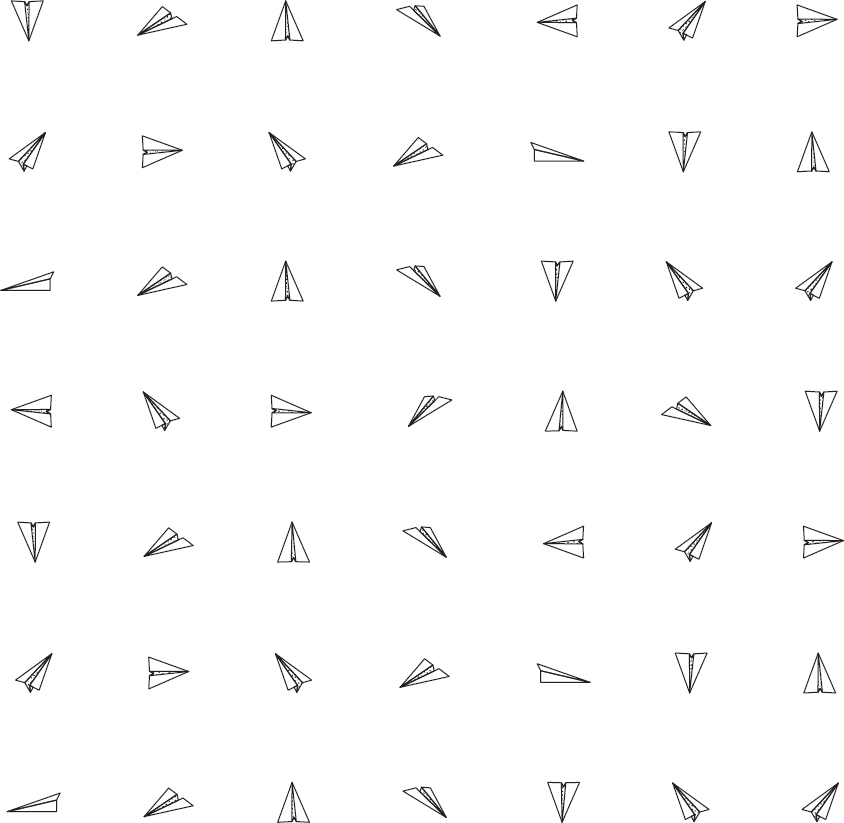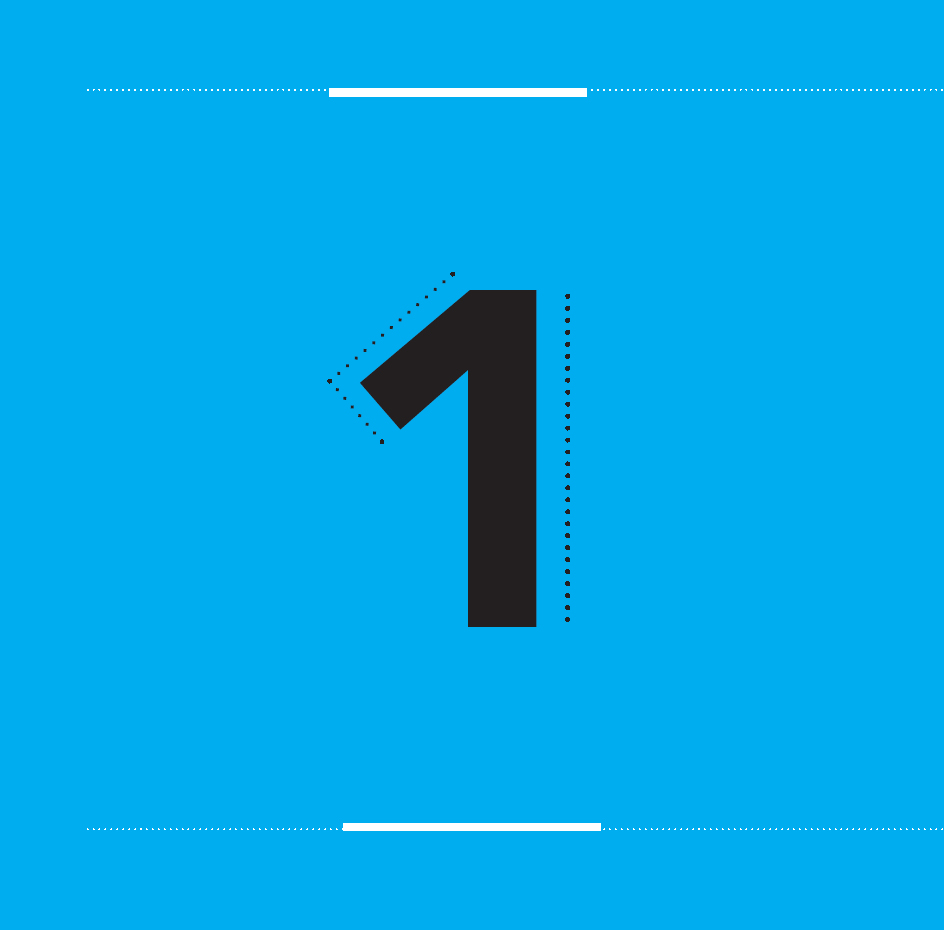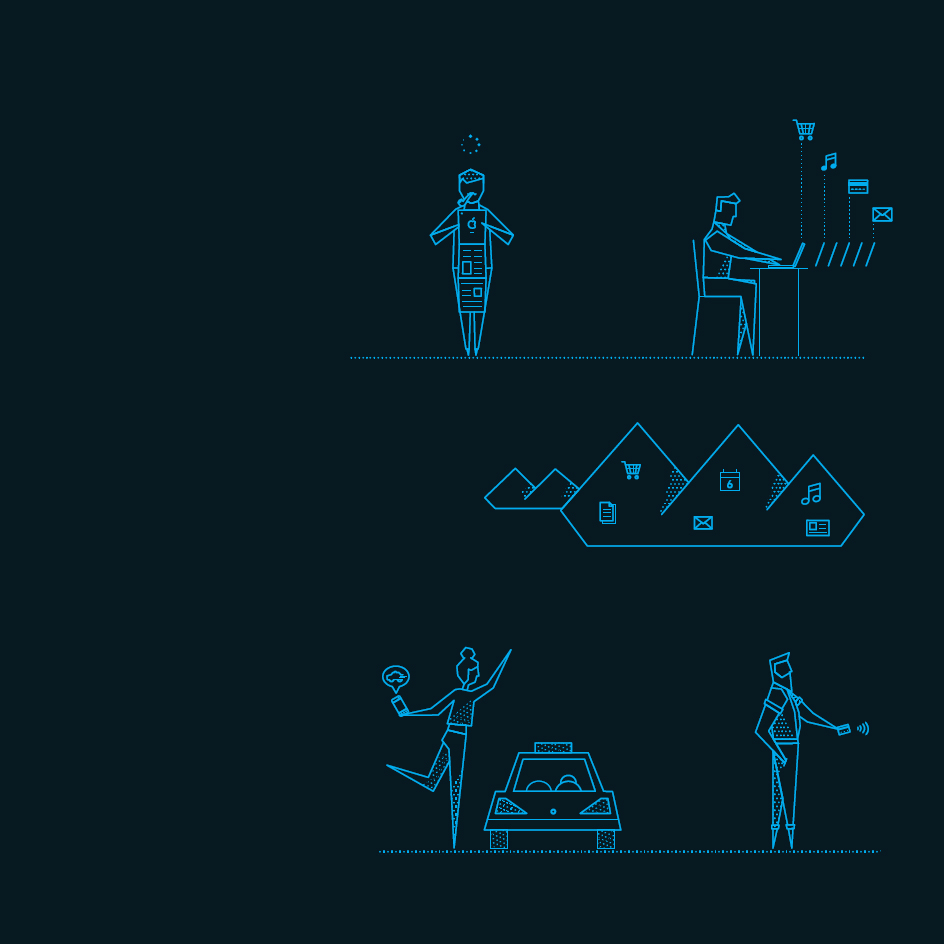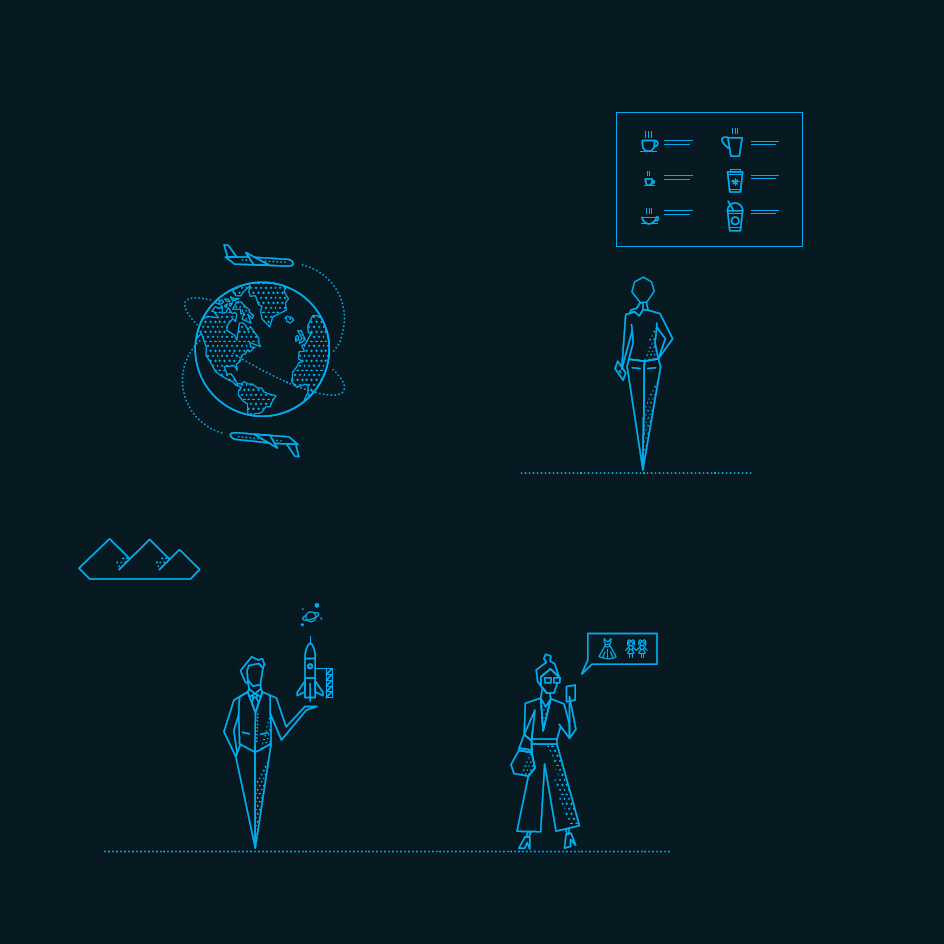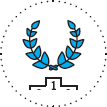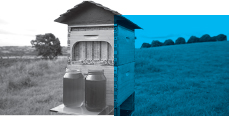You're reading this because you want to create organizations, products, services, or campaigns that delight people. But the very people you're targeting are raising their expectations at an ever-accelerating rate, making them seemingly impossible to even satisfy—let alone delight.
[1.1] The Expectation Economy Why your customers are (almost) impossible to please.
A GLOBAL SNAPSHOT
In Manila, a mother pulls out her Chinese-designed Xiaomi smartphone, opens the GrabTaxi app and hails a cab, while her son uses his phone to track her arrival turn-by-turn. In Brazil, 450 tattoo artists warn clients of high-risk moles after being trained on how to spot signs of skin cancer by suncare brand Sol de Janeiro. In downtown Manhattan, a shopper stops on West 22nd Street to purchase a $200 pair of earphones that have been custom-printed to fit perfectly into her ears.
The remarkable aspect of all this is how unremarkable it has become.
Look past the clichés about how “business as usual is over” and on “the relentless pace of change” and you'll see the great paradox in today's business arena: the truly exceptional has become wholly unexceptional.
Customers—them, you, me, all of us—are no longer marveling at how efficiently global markets satisfy our mindboggling array of needs and wants. Instead, we merely rage at any moment of failure.
And despite the global consumer arena being more diverse and varied than it has ever been, its inhabitants share a common mind-set: astonishingly elevated expectations, set at the high watermark not of personal but of collective experience, and applied ruthlessly to each and every business, product, service, or experience available.
Welcome to the Expectation Economy.
THREE STRANDS OF EXPECTATION
THE EXPECTATION ECONOMY: AN ECONOMY OF EVER-ACCELERATING CUSTOMER EXPECTATIONS, APPLIED RUTHLESSLY TO EVERY PURCHASE DECISION, EXPERIENCE, AND MOMENT OF ATTENTION.
The Expectation Economy is built on the convergence of three strands of customer expectation: rising quality, positive impact, and personal expression. These give customers significant power and control, while businesses are left chasing—and never quite catching up with—the curve of accelerating expectations.
But if you understand where and how these expectations are growing, you can start to change that. Let's get going.
[1] RISING QUALITY
Near-total transparency now sees organizations that deliver anything less than the best die an increasingly rapid death. Meanwhile, the ability and pace at which new entrants can find their way into the hands of customers continues to accelerate. Taken together, these changes ensure that customer expectation of new products and services is (rightly) cycling higher and higher.
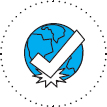
[2] POSITIVE IMPACT
Rising and unavoidable awareness of the impact of their actions is leaving many people trapped in a guilt spiral over the negative environmental, social, and health impacts of their consumption. Combine this with the growing number of ethical and sustainable (often startup) businesses, and the result is an expectation that new products and services will offer continued indulgence, but without the guilt.
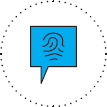
[3] PERSONAL EXPRESSION
In today's societies of material abundance, customers are increasingly prioritizing self-improvement and personal expression. Diverse forms of status currency—knowledge, taste, reach, and more—are combining with changes in the way people value new experiences and connect to one another, to offer consumers new avenues of personal expression through consumption. The result? Customers expect not only to have more, but to be more.
 [1] RISING QUALITY
[1] RISING QUALITY
Why today's best is never quite good enough.
No one who serves customers today is remotely surprised by the contention that they demand the highest quality and service.
But it's the expectation of rising quality that explains why today's customers are never satisfied with what they have—or even the best on offer—and will instead continue to seek newer, faster, more affordable, more exciting, simply “better” options.
To understand this race to the top—and to prosper inside it—it pays to appreciate the forces driving customer expectations of quality:
- Transparency Triumph and the survival of the best.
- Creative Destruction and the many benefits it brings people.
- Easy Experimentation and a tendency toward greater access to—and trust of—the new.
TRANSPARENCY TRIUMPH
The last two decades have seen the web drive a revolution in transparency that has transformed many aspects of the consumer and business arena. Yadda yadda . . . so far, so 1999.
However, the real and, dare we say, interesting implication of TRANSPARENCY TRIUMPH is that finally, the survival rate for businesses that fail to delight customers is approaching zero.
This is because near-perfect and near-instant information has pushed the uninformed customer—one unable to locate the best possible option—close to extinction. Armed with a smartphone, no matter where customers are or what they are seeking, the views and experiences of others—and with them, the security of pre-purchase confidence—are but a tap away.
Of course, in a world where even certain models of paper shredder have over 4,000 reviews on Amazon, customers now know just as well as business professionals that it's getting tougher for the second best (let alone third, fourth, and beyond) to survive, too. The result? Ever-intensifying expectations of high-quality products, services, and experiences, and the valid expectation that future standards will be even higher as all but the best are driven out.
DOMINO'S PIZZA
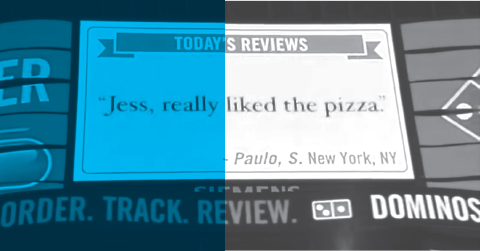
The turnaround of U.S. pizza chain Domino's between 2009 and 2014 is a compelling case study in how transparency can (nearly) kill an underperforming business. And how a deep understanding of how to harness transparency can save it.
In 2009, Domino's pizza sales were in massive decline, as customers responded to poor reviews and deserted it for rivals Pizza Hut and Papa John's, whom they perceived as better value and higher quality, respectively. When employees uploaded a video to YouTube that showed them violating the food they were preparing, the company reached its nadir.
In response, the pizza chain acknowledged and embraced the near-perfect information available to consumers. It acknowledged customer reviews that called out their “boring, bland, mass-produced pizza.” In December 2009 it launched The Pizza Turnaround, a documentary detailing how the chain had “reinvented its pizza from the crust up.” Domino's invited customers to post photos of its food on the brand's site and published them unadulterated. The campaign continued with initiatives including customer feedback broadcast in Times Square and a live video stream placed in a Salt Lake City restaurant kitchen. Sales rebounded, and between 2009 and 2014 the chain opened 1,800 new stores in 10 countries.
Companies don't spend millions showing you their product in its worst form . . . [but] we're honest and open with our issues. We'll address them head-on.
Patrick Doyle, CEO, Domino's Pizza
CREATIVE DESTRUCTION
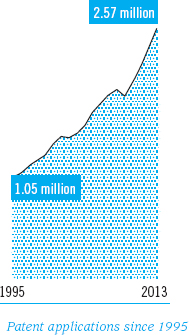
The words “creative destruction” send a chill up the spine of countless business executives. After all, it's the force that threatens to sweep you out of the market and into irrelevance, right?
Customers, however, see the current wave of creative destruction as something to be celebrated. That's because it brings an endless stream of new products and services, each better than the last.
Today, new innovations are emerging hourly, from all corners of the globe. These innovations are fueled by the incredible democratization and globalization of innovation and manufacturing tools, from crowdfunding to 3D printing to app stores and more. This revolution has put immense creative power in the hands of people around the world, ensured that the best can come from anywhere, and radically transformed perceptions about who can be an innovator.
Of course, it doesn't necessarily hold that more innovation equals better innovation. But transparent markets that are filled with a greater volume of new ideas, more new entrants, and more efficient matching of needs with innovations (see overleaf) inevitably become a more hostile environment to old, tired, and lower-quality offerings.
The result? An upward cycle in product and service quality, and in customer expectations of quality.
UBER: HOW NEWCOMERS TRANSFORM EXPECTATION
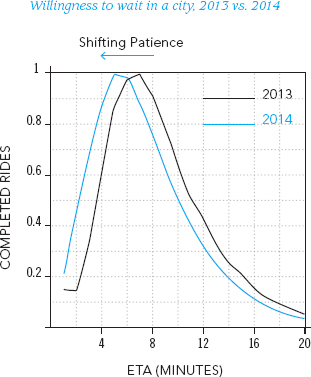
Consumer expectation can sometimes seem an intangible substance: hard to see, even harder to quantify. And that can make it difficult to perceive the impact of new, higher-quality entrants on expectation.
In January 2015, transportation provider Uber made public a dataset that provides a remarkable glimpse of the Expectation Economy in action.
Uber's data looked at how the estimated driver arrival time shown to users influenced their decision to complete or cancel a planned trip. In city after city the pattern was clear: the longer Uber had been operating in the city, the less patient users became when it came to pickup times (as shown above). In short, as the inhabitants of a city became more familiar with Uber, their expectations of fast pickup increased. The implication, in Uber's own words? “We realize we have to continually raise the bar.”
We couldn't have put it better ourselves.
EASY EXPERIMENTATION
So, your customers harbor expectations of rising quality. But those same customers are also more able—and more prone—than ever to experiment: enthusiastically diving into a never-ending stream of new products, services, and experiences in their search for the best available option. Why?
First, trying new products and services is less risky than ever. The new Samsung smartphone? See it unboxed and discussed on YouTube before buying. A subscription to a new makeup curation and delivery service? Read nine reviews on a trusted beauty forum before signing up.
Second, virtual products and services encourage experimentation. From yet another mobile photo app downloaded and discarded, to another Kindle e-book sample hastily skimmed, digital products are low risk and low cost (if they cost anything at all), and so can be tried and discarded at will.
Third, subscription or rental business models (from Birchbox to Rent the Runway) allow people to experience physical products for less financial outlay, while online retailers will often not only pay for return shipping, they'll include a preprinted returns label!
Finally, all this experimentation becomes a self-accelerating cycle as more people try out new products and services and share their experience, creating a virtuous (for customers) and challenging (for innovators) circle of ever more experimentation, ever greater transparency, and ever higher expectation.
PRE-TAIL PLATFORMS: EDGING CLOSER TO PERFECT MARKET FIT
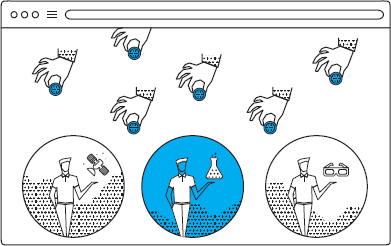
One further glimpse of the new innovation landscape: crowdfunding platforms such as Kickstarter or IndieGogo or Brazil's Catarse or China's DemoHour.
By allowing innovators to test the market for new ideas with almost zero risk, these sites act as catalysts for innovation. The ideas that prove popular secure funding, while others simply die a relatively inexpensive (if not zero cost) death.
Take the Pebble Smartwatch. Funded to the tune of $10.2 million in just 30 days in 2012, it helped establish the category that Google and Apple later entered (while by January 2015, Pebble had sold its millionth watch). Similarly, the potential of these platforms is shown by the Oculus Rift virtual reality headset, which raised $2.4 million in late 2012 before being bought by Facebook just 18 months later, for $2 billion.
It's not just gadgets being funded: The Square (a film about the Egyptian revolution) was nominated for an Oscar, while artist and activist Ai Weiwei funded his exhibition on Alcatraz Island via Kickstarter.
Indeed, the near zero-risk environment that crowdfunding offers innovators means that the diversity, inventiveness, and sheer number of innovations on offer are finally coming close to matching the diversity of people's needs, wants, and preferences.
In the years ahead, as more innovators turn to crowdfunding to test the market for their innovations and creative projects, they will further push up your customers' expectations of what is possible.
 [2] POSITIVE IMPACT
[2] POSITIVE IMPACT
A race to escape the guilt spiral.
We can see the second strand of the Expectation Economy at work as we look at the common threads that unite many of today's most talked-about brands—from Tesla to Patagonia, Chipotle to TOMS.
These expectation-setting brands embody the rising demand for products and experiences that customers can enjoy without feeling guilty at the impact they are wreaking on themselves, society, or the planet.
And alongside the relentless disruption that these challengers represent, we can detect a further expectation shift: when it comes to deciding whom to trust with delivering positive impact, customers are lavishing love and attention on new and barely proven startups far more enthusiastically than on established incumbents. In short, people expect all brands to be good, but they assume newer brands will be better.
Understand these two forces, and you'll be well-positioned to deliver the positive and meaningful impact that customers expect.
GUILT-FREE CONSUMPTION
Let's start with a truth all optimists hold self-evident: people are inherently “good” and, all things being equal, they want to have a positive impact on the world, or at least avoid having a negative impact.
However, pervasive transparency has made the negative impacts of much consumption—on the planet, other people, and oneself—ever harder to ignore.
The result? Rising numbers of people feel trapped in a guilt spiral over the negative impacts of their lifestyles and would like to change. But too often, a mixture of necessity, habit, and yes, lack of willpower means limited success. Cue more guilt.
It's ultimately this tension that sits at the heart of the sustainability mega-trend. Forget the science; what's more relevant to businesspeople is that millions are in search of—and increasingly expect—a new consumerism, one with reduced negative impact or, better yet, downright positive impact.
IN THE EXPECTATION ECONOMY, THE ULTIMATE LUXURY IS FREEDOM FROM THE GUILT SPIRAL.
TESLA
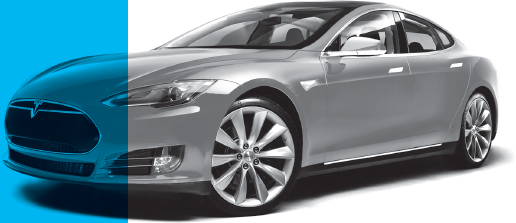
In little more than a decade, California-based Tesla Motors has become one of the iconic brands of the early twenty-first century. Of course, billionaire founder Elon Musk, great design, and burgeoning interest in innovative new automotive technologies have all helped. But Tesla's brand identity is about more than that.
Fundamentally, Tesla's hold over the customer consciousness reflects a new and powerful impulse toward a consumerism that allows continued indulgence while absolving guilt over negative environmental, social, and health impacts. At the heart of the Tesla brand is a mission to reconcile those two seemingly contradictory imperatives. The Tesla Model S does just that, providing all the indulgence and excitement of a traditional sports car—a sporty design, great performance, eye-catching look—while alleviating guilt by employing cutting-edge lithium-ion batteries to minimize environmental impact.
And it appears to be working: in October 2014, automotive intelligence firm JATO reported that in Europe in the preceding month the Tesla Model S outsold established rivals such as the BMW 7-Series and Audi A8.
PATAGONIA
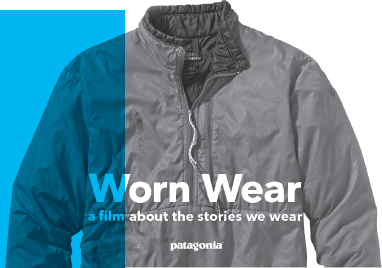
During the past five years, U.S. outdoor clothes manufacturer Patagonia has taken repeated steps to further cement its reputation as a company that puts environmental and social purpose at the heart of everything it does.
In 2011, while other retailers were blasting their mailing lists with Black Friday promotions, Patagonia sent an email to its customers with the headline: “Do Not Buy This Jacket.” The email then promoted the company's Common Threads eBay platform, where customers can buy and sell secondhand Patagonia clothing (Patagonia makes no money from the sales). In 2012, it launched The Footprint Chronicles, a platform allowing users to track the environmental impacts of its supply chain. The following year saw the launch of $20 Million & Change, its corporate venturing arm, investing in environmentally minded startups. Late in 2014, the company announced its Traceable Down initiative, allowing customers to trace any down used in Patagonia clothes back to birds that have not been force fed or live plucked.
For Patagonia's founder Yvon Chouinard, these initiatives are simply a natural extension of the company's mission statement, which is to “build the best product, cause no unnecessary harm, use business to inspire and implement solutions to the environmental crisis.” And they appear to be working: in 2012, Patagonia revenue rose by a third year-on-year to $543 million, while in 2013 it rose a further 6 percent to $575 million.
CLEAN SLATE BRANDS
Traditional brand theory suggests that history and heritage are valuable assets that lie at the heart of a brand's ability to attract and retain customer attention. However, we're witnessing a profound shift in power in the business arena, one that calls this “truth” into question.
The new truth is that customers are now as attracted (if not more so) to unproven brands and organizations as they were to established ones in the past.
They expect the new—that means the startup, legacy-free, even unknown brand—to be more trustworthy, ethical, and simply better than established brands.
Indeed, as the hostility shown toward incumbents, from banks and fast food chains to big pharma demonstrates, “established” is now often just another word for unsustainable, unethical, unhealthy, unresponsive, untrusted, and most likely less compelling than more recent entrants.
Once you understand this counterintuitive insight, customer attitudes to brands as diverse as Sustain (an ethical condom startup) to Venmo (a disruptive peer-to-peer payment service) to Lockitron (a mobile-controlled smartlock) start to make sense.
Lockitron is a device that allows users to lock, unlock, and share access to their front door remotely through their mobile. Initially rejected by Kickstarter, Lockitron formed its own crowdfunding campaign to raise funds to develop the device through preorders.
Its initial goal of $150,000 was hit within 24 hours, and five days after launching, the company had raised $1.5 million! Ask yourself: would customers have trusted the security of their homes to an unproven startup a decade ago?
Yet the faith that customers are putting in newer, lesser-known brands is not unfounded. By dint of being more agile, and with easy access to innovation tools, startup brands are often better than their established counterparts. What's more, the fact that they are (by definition) newly established means the new business values that customers expect—higher environmental, ethical, and social standards, and transparency—are often deeply embedded in their business models and practices from the start.
Contrast this with the empty corporate values which legacy brands espouse—remember BP's “Beyond Petroleum”—that then ring hollow in the face of exposé after exposé about worker exploitation, harmful processes, and mind-sets (no matter that these may have been established in a different era, under different expectations).
The rush to these CLEAN SLATE BRANDS has created a virtuous circle, in which new brands that offer higher quality and more ethical and sustainable practices raise consumer expectations (of continued indulgence minus guilt), while that expectation itself fuels the success of an even greater number of even newer CLEAN SLATE BRANDS.
 [3] PERSONAL EXPRESSION
[3] PERSONAL EXPRESSION
Me—only better
Today, your customers don't just want—and expect—to have more (of ever higher quality). They don't just want to escape guilt (or even do good). They expect to be more, too.
Enter the third and final strand of the Expectation Economy: rising expectation among your customers that consumption will deliver personal advancement, meaning, and identity. In short, customers are looking for the organizations they spent time and money supporting, the products they use, and the experiences they have to help them be the people they want to be and to make real the idealized versions of themselves that they carry around in their head. Indeed, examine many of the brands that seem to best tap into the cultural and consumer zeitgeist—from Nike and Instagram to Khan Academy and Airbnb—and you'll find they do just that. Let's see how.
ABUNDANCE AND SELF-ACTUALIZATION

The Quantified Self movement. The explosion in online education and MOOCs (Massive Open Online Courses). Mindfulness. FOMO (Fear of Missing Out). An endless ocean of high-quality, creative, user-generated content. All are manifestations of the rising expectation that consumption will deliver personal improvement.
What's driving this? At heart, it's about the impact that abundance has on the way people think about themselves, and their relationship to the world.
It's likely that many—and in some cases all—of your customers live in societies of once undreamed of material abundance. Societies in which people have, by historical standards, an abundance of “stuff.”
Does this mean the end of the story for consumerism? Hardly. As far back as 1943, psychologist Abraham Maslow identified “self-actualization” as the final, elusive imperative that drives human behavior once basic needs are met.
As material abundance becomes the norm, the drive to become the person they want to be—to embody their highest idea of themselves—becomes the key motivator of behavior.
In today's affluent consumer societies, that drive means decision making on new products, services, and experiences becomes inextricably linked to identity. Through their consumption, your customers are pursuing nothing less than the self-improvement—physical, mental, emotional, spiritual—that can help them transform into their ideal selves.
NIKE
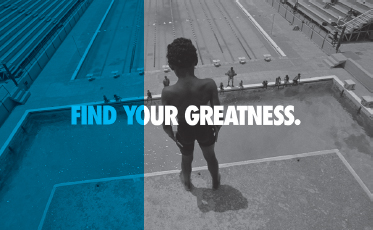
Nike has built an entire brand ethos—and revenues of around $7 billion per quarter—around the endless quest for self-actualization. These examples provide a glimpse of how they did it in 2014.
QUANTIFIED SELF AND GAMIFICATION
URBAN RUNNERS ENCOURAGED TO REPRESENT NEIGHBORHOODS
Ahead of the We Run MX event in Mexico City during November 2014, Nike created 11 different clans to represent areas of the city. Runners could join a team and upload their training data via the Nike+ service. A leaderboard ranked the clans based on the kilometers run, and participants could unlock Nike+ awards for their pre-race training.
REWARDING GOOD BEHAVIOR
VENDING MACHINE ACCEPTS FUELBAND POINTS AS CURRENCY
July 2014 saw the installation of special vending machines, called Fuelboxes, across New York City. The machines dispensed Nike products only in exchange for points accrued with the brand's fitness wearable, the FuelBand, within the last 24 hours. Users plugged their devices into the machine to pay for items such as shirts, socks, and hats.
GUILT-FREE CONSUMPTION
ECO-FRIENDLY CONCEPT STORES MADE FROM E-WASTE
Opened in cities including London, New York, Shanghai, and Hong Kong during June 2014, NikeLab is a series of experimental concept stores designed for maximum eco-sustainability. Each one features modular fixtures made out of recycled electronic waste, with structures held together without the use of chemicals.
People now demand us not to say “Just do it” they say, “Help me just do it.” “Enable me to just do it.” And the role of the brand changes from one of inspiration to one of inspiration and enablement.
Stephan Olander, VP Digital Sport, Nike
STATUS DIVERSIFICATION
The pursuit of self-actualization is not just about who I am; it's about who I am and am seen to be. It's not enough for people to fulfill their potential. They want others to see it, too.
We all know what traditional consumer status looked like: the conspicious consumption that declared “I am financially successful.” But material abundance means that many of the old status symbols—cars, condos, credit cards—have lost much of their power. Instead, we're amid the rise of a post-material “statusphere” in which overt displays of financial success are accompanied and sometimes replaced by other, more diverse forms of status currencies, such as the three below:
[a] As people become immersed in the creative and knowledge economies, STATUS SKILLS—the acquisition and display of knowledge and expertise—become ever more prized.
[b] Abundant choice has also led people to strive to tell ever more interesting STATUS STORIES via products, materials, services, and experiences with compelling backstories that (often implicitly) speak volumes about the tastes and sensibilities of the user.
[c] The pervasiveness of a life lived publicly (or if not publicly, then at the very least, shared on social media with friends and family) has amplified digital status expression, making online status perhaps the most valuable personal social currency of all.
Just three shards of the Expectation Economy's fragmented statusphere:
STATUS SKILLS: FLOW HIVE
NO BEEKEEPING SUIT REQUIRED: HOMEMADE HONEY ON TAP
Flow Hive is an artificial honeycomb system that enables hobbyist beekeepers to extract honey by simply turning a faucet (rather than having to smoke the bees out and remove the frames). It raised over $8 million from aspiring beekeepers during its crowdfunding campaign in early 2015.
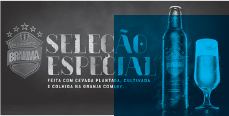
STATUS STORIES: BRAHMA
BEER GROWN UNDER THE FEET OF BRAZILIAN SOCCER STARS
To commemorate its sponsorship of the 2014 Soccer World Cup and the national team, Brazilian beer brand Brahma released Seleção Especial. The limited edition beer was made from barley that had been grown on the field where the Brazilian soccer team had trained.
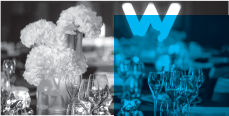
ONLINE STATUS: W HOTELS
SOCIAL MEDIA SERVICE FOR WEDDING COUPLES
In March 2014, New York City's four W Hotels began to offer a social media concierge service for weddings. For $3,000 guests can have their wedding showcased across social media with live hashtagged tweets and Instagram photos and videos. Niche now, common practice in the future?
EXPERIENCE CRAMMING
One important manifestation of the diversification in status is the long-lasting shift away from the acquisiton of products and toward the acquisition of experiences. Of course, that's nothing new. Way back in 1998, business thinkers Joseph Pine and James Gilmore coined a term for it: the Experience Economy. The searching out of new, rare, and status-worthy experiences—and the acquision of great memories—were the defining behaviors of Pine and Gilmore's Experience Economy.
Fast-forward almost 20 years, and we're now in the Expectation Economy (another “Economy”!). Here, experiences that few others can or have had remain a surefire status symbol, but due to the near-overwhelming number of experiences available and the sheer number of people in pursuit of unique experiences, truly exceptional experiences are becoming hard to find, and often out of reach for those without limitless budgets.
The cheaper, more practical alternative is to turn to EXPERIENCE CRAMMING: collecting and mixing and matching as many, and as wide a variety, of new experiences as possible to form a collage that uniquely reflects the individual (and how interesting they are).
And with a growing number of businesses, from low-cost airlines to energy-drink-cum-media-platforms to experience-rich, pop-up retailers catering to this behavior, customer expectation around experiences—and what they need to offer—continues to ramp ever higher.
SELFRIDGES
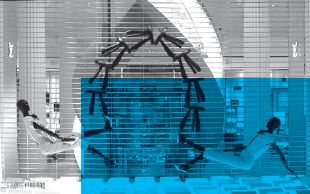
The famous U.K. department store consistently offers customers a rich array of new experiences. In 2014, it announced record operating profits of £150 million, up 12.3% on the previous year.
THE MUSEUM OF EVERYTHING
In 2011, art project The Museum of Everything launched an exhibition in the store. Over 400 drawings, paintings, and sculptures by self-taught artists with disabilities were displayed. Inside, a Films of Everything display showed the artists at work in their studios.
EDIBLE CRAZY GOLF COURSE
May 2012 saw culinary architects Bompas and Parr install a popup nine-hole edible crazy golf course on the roof of the store. The course featured giant cakes, representing famous London landmarks, including Tower Bridge and Nelson's Column.
WORLD'S FIRST DEPARTMENT STORE CINEMA
Also in 2014 the store partnered with the Everyman Cinema to launch a new movie theater on the ground floor of its Oxford Street flagship. The first 12 films to be screened were chosen by influential fashion designers including Marc Jacobs and Paul Smith.
FESTIVAL OF IMAGINATION
In 2014, the store hosted a six-week Festival of Imagination. Alongside displays of innovative and prototype products, artists, writers, and innovators were invited to speak in the in-store Imaginarium, created by designer Rem Koolhaas.
CONNECTION AND COMMUNITY
As we've seen above, businesses that have shifted their thinking toward “creating with” rather than “selling to” have thrived. Underlying that is a key truth about people: alongside the drive toward self-actualization is a desire to feel part of something bigger than themselves.
SOCIAL VALUE
Warren Buffett noted, “price is what you pay, value is what you get.” Nowhere is the new mindset around social value more honed than in the Collaborative Economy. Here, new collaborative models enable customers to deal directly with other people, while the brand—nay, the platform—acts as facilitator rather than traditional provider. For “users” (the people formerly known as customers) these models offer a more meaningful consumerism, one that allows them to be active participants rather than mere passive consumers.
Once people experience this sense of connection, it quickly starts to feel normal, if not expected. Cue the exponential growth of the best Collaborative Economy platforms. It took Airbnb (the poster child of the movement) three years—from launch in 2008 to 2011—to see 5 million nights booked via its platform. The next 5 million nights were booked in less than a year.
RISING TRUST
Of course, participation in the Collaborative Economy requires trust in strangers. But trust in peer-to-peer models will only increase as the volume of participants increases, causing reputation ratings and other indicators of trustworthiness to become more reliable.
What's more, the combination of two-way rating and genuine connection means the peer-to-peer experience is often valuable in new ways for those supplying, too. Witness the many Airbnb hosts who share tips about their favorite local experiences with guests.
A POSITIVE CONSUMERISM
So where is all this leading?
Will all peer-to-peer services succeed (or even survive)? No. The winner-take-all network effects of platform business models means many will fail. But those that win will win big, and in the process change the way participants think about consumerism, value, and even themselves.
That's the revolutionary power that the Collaborative Economy can wield, by reducing the profit motive to just one driver of value among many—connection, experience, and more. This is extremely challenging to conventional businesses, which struggle to entertain, let alone compete on, measures of non-financial value.
Ultimately, and as with GUILT-FREE CONSUMPTION, the Collaborative Economy is liberating customers to feel good about their consumption. When “consuming” means participating in networks that are both personally and socially valuable, then far from holding back, customers feel free—if not duty bound—to dive in and embrace that more meaningful and positive consumerism!
BLABLACAR
So-called because of the “chattiness” factor* of its users, BlaBlaCar is a textbook example of the multiple new drivers, motivations, and expectations at play in the Collaborative Economy.
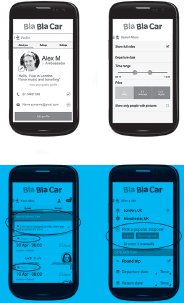
BlaBlaCar is a French ride-sharing platform that allows users to “sell” (at cost) the empty seats in their car on long-distance journeys. The service raised $100 million in July 2014, and by 2015 its members were sharing over 2 million rides per month in 18 countries. It perfectly illustrates two key features of the Collaborative Economy:
First, trust is the essential ingredient. Online communities have revolutionized the level of trust people can place in strangers. In 2012, BlaBlaCar polled its users and found that members with completed profiles were more trusted than neighbors, second only to friends and family.
Second, people have diverse motives for participating. Users reported their reasons for using BlaBlaCar as: saving money (cited by 85 percent of users), but also friendliness (52 percent), the environment (40 percent), sharing (35 percent), and more.
The convergence of these two forces is creating a “customer” experience with new participant expectations—of more for less.
Where there is trust, there can be collaboration. There can be value. This is not an incremental change to society . . . it's a disruptive change. Nothing will ever be the same. The building block of society, interpersonal trust, has been transformed from a scarce into an abundant resource. Our potential to collaborate and create value is also transformed.
Frédéric Mazzella, CEO, BlaBlaCar
THE EXPECTATION CYCLE
Now that all three strands of the Expectation Economy have been laid out, we can step back and view it in its entirety.
The consumer arena we've outlined might seem an intimidating place for innovators. But for customers, the Expectation Economy is about increasing excitement, opportunity, diversity, and value.
Expectations of rising quality, positive impact, and personal expression mean that people are justifiably enthusiastic participants in an ever-accelerating cycle of expectation, consumption, meaningful impact, and yet more consumption.
In summary:
[a] Customers can now be confident that they can get the highest quality available in every purchase and experience.
[b] This is set against an expectation that quality is rising and that the new will be even better.
[c] Seeking out the best of the new, customers gravitate toward CLEAN SLATE BRANDS. That often means consumption of more sustainable, ethical, community-focused, and healthy products and services from newer brands with contemporary values baked in to their operations.
[d] This results in greater self-actualization, as customers find themselves more closely aligned with their deeply held values: namely, not being responsible for negatively impacting themselves, other people, or the planet.
[e] This pushes customers back to the beginning of the cycle, in the expectation that yet more consumption of that which is newer—and “better”—will mean even more positive impact.

Of course, this is a stylized model of a perfect Expectation Economy at work. We're not saying that all real-world consumption is this simple. The real-life picture is made more complex by all kinds of other motives, contingencies, and realities, both on the customer and business side.
But the trend is undeniable: this fundamental cycle is present in—and underpins—an increasing amount of customer behavior today. And, as we'll explore in the next section, using trends will enable you to understand the secret forces behind many of the contemporary consumer arena's most exciting businesses and enable you to anticipate—and contribute to—the next phase in this cycle of rising quality, positive impact, and personal expression.
> NEXT
Having read this chapter, you now:
- [1] Know that the Expectation Economy means ever-higher customer expectation, applied ruthlessly to every purchasing decision;
- [2] Understand the three fundamental strands of accelerating expectation: rising quality, positive impact, and personal expression; and
- [3] Understand how those three strands work in concert to create the Expectation Cycle.
Next, let's take a look at the fundamentals of consumer trends and start to see how harnessing these trends can provide the answers you need to meet the challenges posed in this chapter. Onward!
*As well as disclosing whether they smoke or will carry pets, both drivers and passengers rate how talkative they are—or are comfortable being!

